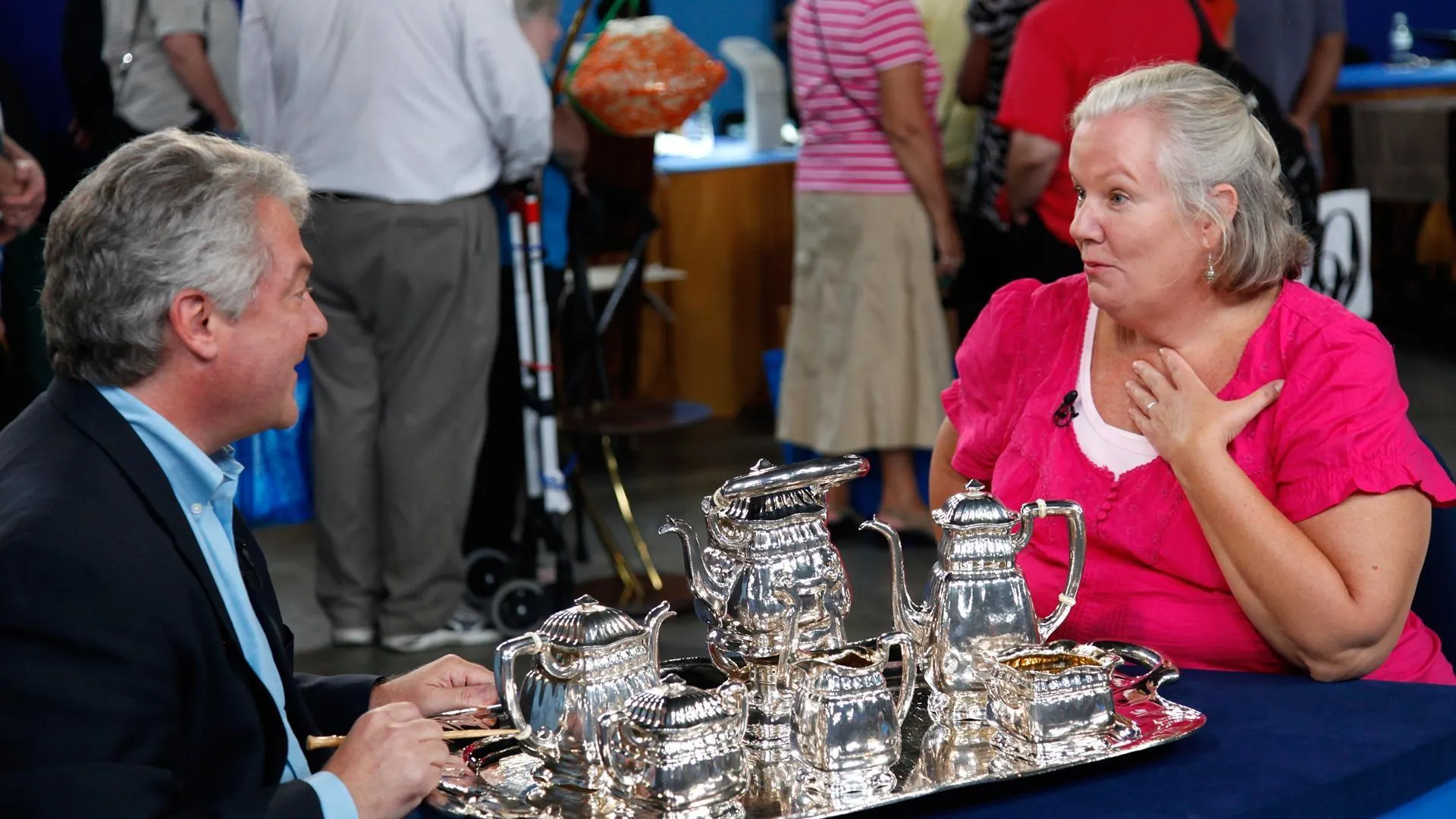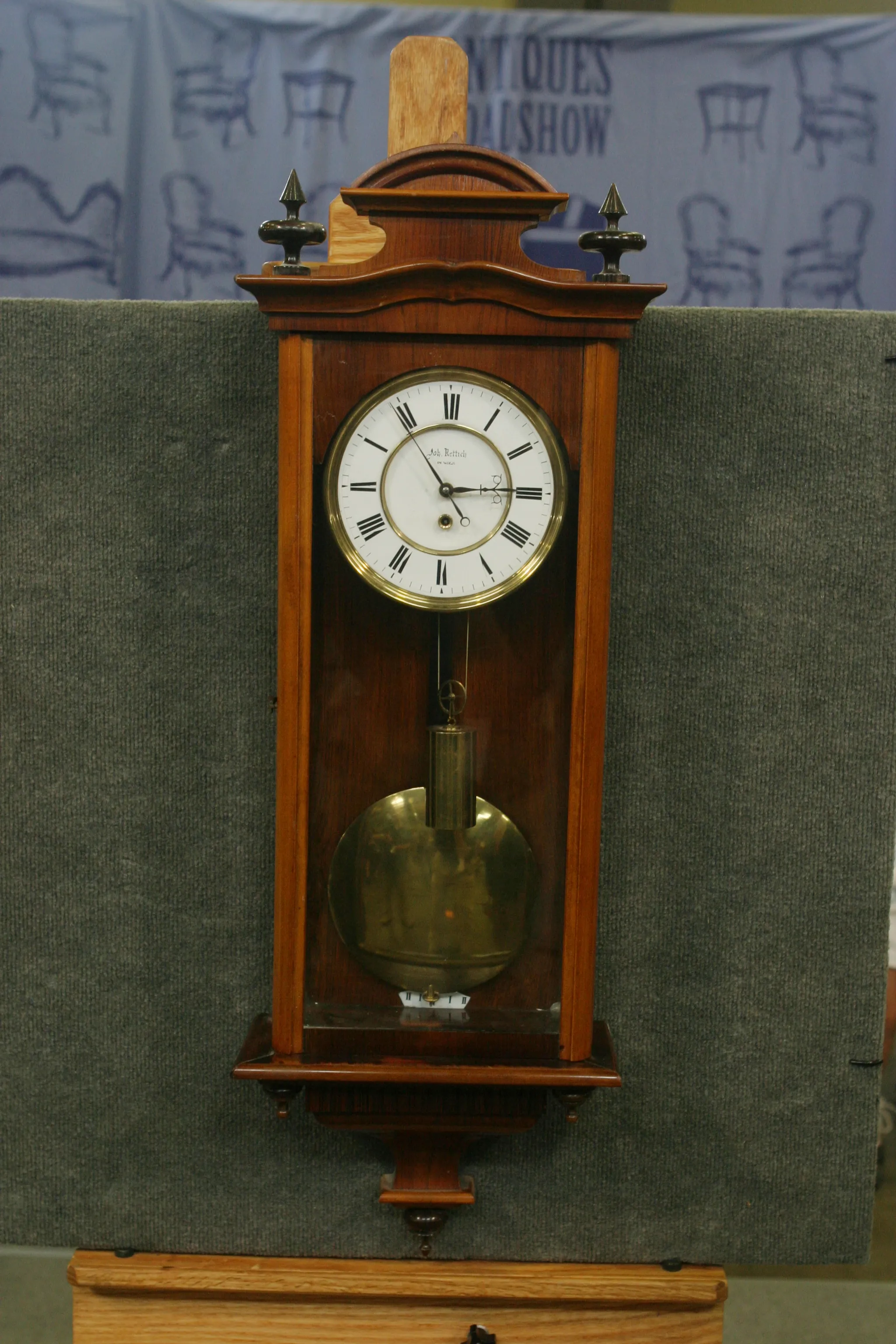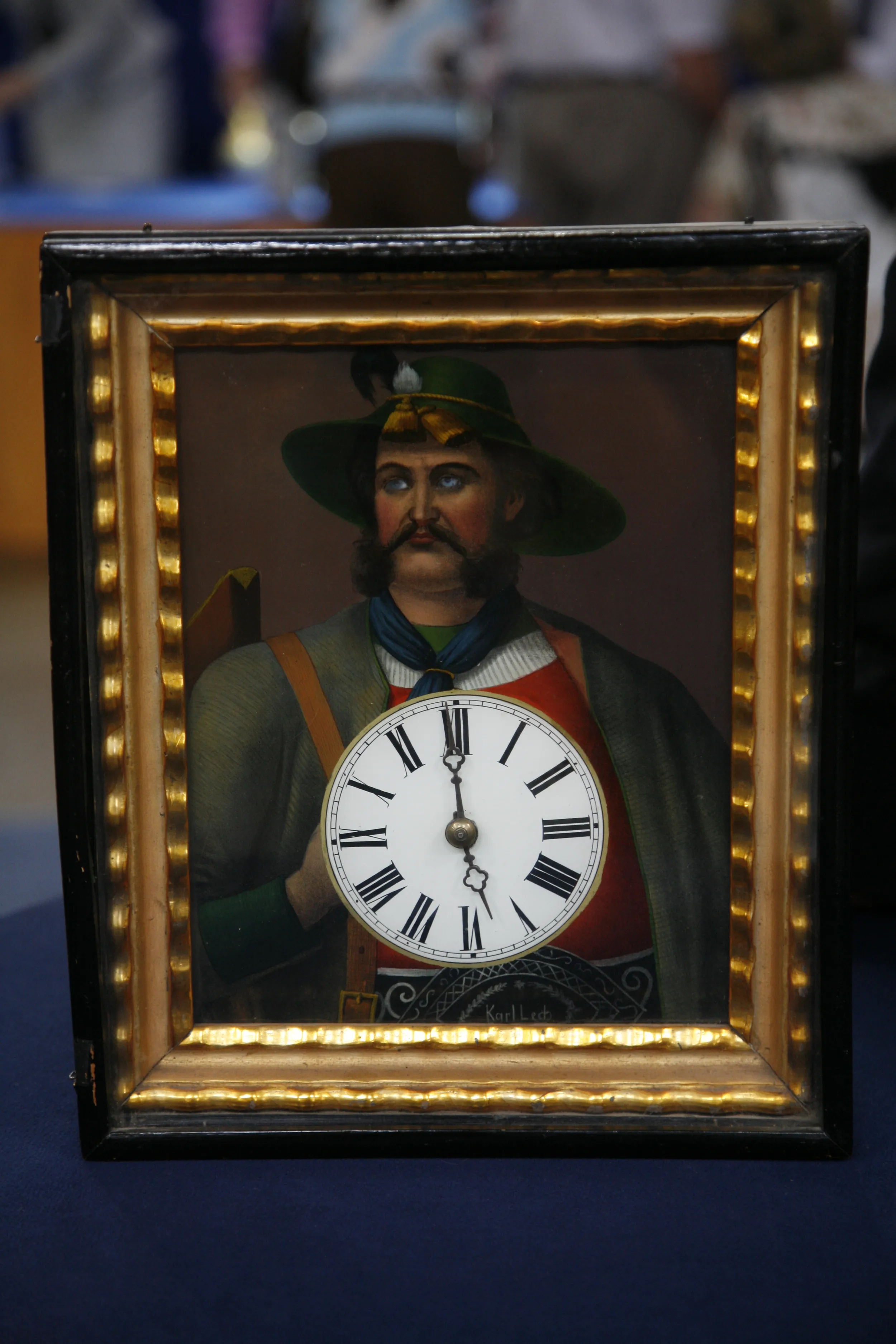GUEST: Well, it's my grandmother's clock. Passed it down to my mother and my mother brought it home. And now my mother's passed, so I've got it.
APPRAISER: Do you know what type of clock it is? Do you know what it's called?
GUEST: We always called it a banjo clock or grandmother's clock.
APPRAISER: Well, it's a Willard's patent timepiece is what we call it, but in the trade we do call it a banjo clock, so that would be the correct name. But it's not a grandmother's clock. That refers to a shorter tall case clock, actually. Do you know who made it?
GUEST: No. I tried to read what's written; it's too worn, I can't read it.
APPRAISER: It's very difficult to read, it is. But if you see enough of them, then you sort of can get a feel for the signature, and it says, "Aaron Willard, Jr." on the dial right across here.
GUEST: It does?
APPRAISER: Yeah. And then below that it says "Boston." And that's the location in which it was made in 1815 to 1820. I don't see a lot of these clocks. In fact, this is the first Aaron Willard, Jr. banjo clock I've seen since I've been doing the Roadshow. Which is even more rare is the fact that these tablets are survivors. They're original to the clock.
GUEST: They're original?
APPRAISER: Yeah. And that's very rare for a banjo clock, especially a first-period banjo clock. The reason why is that the weight cord was originally made of animal gut. Now this has a braided nylon in it. But animal gut would deteriorate, dry out, and eventually would fail and the weight would come crashing down and break out a glass, either the throat glass or the bottom glass or both glasses. But today it's not a concern because we use a braided nylon that doesn't deteriorate.
GUEST: So was it replaced?
APPRAISER: It was replaced at some time. His uncle, Simon Willard, was our country's most famous clockmaker, and he was actually responsible for the patent of this clock in 1802. It's an American design that he invented that made clocks more affordable and more compact. His father, Aaron Sr., was very famous as well. But it has this beautiful acorn finial at the top. It has these wonderful Aaron Willard, Jr. hands that are three-dimensional and they're handmade. It has a little minor flaking in this area, but not a big deal. It's not in the artistic portion of the glass. That can be restored and it can be done very well. One of the condition issues with this is this is called a gilded rope front. That refers to this rope molding here as well as all around the throat glass. That's regilded, as well as the finial. It's been regilded some time ago. I don't know how long ago, but it's not original to the clock. But a fantastic piece. In a retail setting, this clock would sell from $8,000 to $10,000.
GUEST: Really? Wow.
APPRAISER: So it's a beautiful piece to have.











